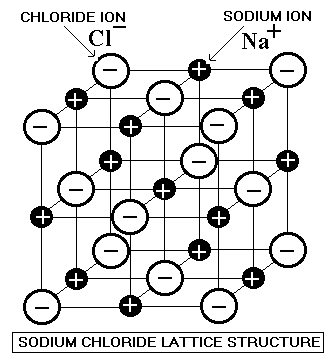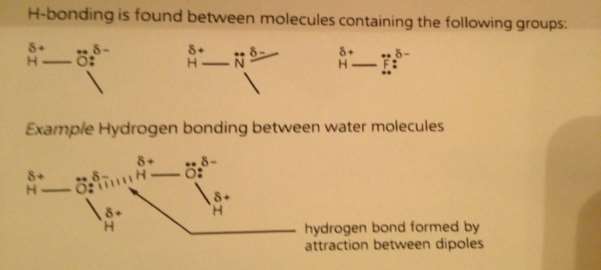All elements are made of atoms which combined with each other form new atoms. They come together in large or small numbers to form very similar or very different atoms and as a result of the combination it is known as a chemical bond. Atoms linked together by bonds have different properties to the original parent atoms. There are only about 100 chemically different types of atoms which make up millions of substances in the world by being combined together. The two main types of chemical bonds the ionic bond in compounds which occurs between a metal and a non-metal and the covalent bond occurring between the two atoms of non-metallic element or between different elements of two atoms.
In ionic boding metal and non-metal atoms when combined together loose or gain electrons so they can have a complete outer shell. As an example if sodium which has an electron configuration 2, 8, 1 loses an electron it is left with stable structure neon which has electron configuration 2, 8. However sodium atom still has one more proton than electrons in the orbit around the nucleus. As a result of protons having positive charge the sodium atom has now become a positively charged sodium ion. The electronic structure of sodium ion is written as [2, 8]+. There are atoms that similarly gain electrons during reactions and they gain noble gas structure. For example, Chlorine has electronic structure of 2, 8 , 7. To have the stable electronic structure of argon it needs to gain a single electron becoming 2, 8, 8. Chlorine has now got more electrons than positively charged protons and is known as a chloride ion carrying a single negative charge. The electronic structure of chloride ion is written as [2,8,8]–. Ionic bonds are formed by atoms reacting together that need to gain and to loose electrons. For example, when sodium and chlorine react together they need to form stable ions which occur by sodium losing an electron and chlorine gaining one. Below is a lewis diagram that shows an example of ionic bonding by formation of sodium chloride (NaCl). (Brown, 2009)

The oppositely charged ions are held together by the strong attraction forces that during ionic bonding form the positive and negative ions. As a result of these bonds between the charged particles a giant structure of ions is formed. To break all the bonds would take a lot of energy as the ions in the giant structure are being held together strongly; therefore the ionic compounds have a high boiling and melting points. Sodium chloride is a good example of an ionic substance. It is known as NaCl or common salt and by being a crystalline solid it has a high boiling point of 1413oC and melting point of 801oC. Below is a diagram of a sodium chloride giant ionic structure.

Two non–metal atoms reacting together seek to gain and share electrons to achieve a structure of a noble gas and become stable. The atoms are held together by the electrostatic attraction of the pair of electrons concentrated in between the two nuclei. This is known as a covalent bond. A molecule is formed when atoms are being held together by the covalent bonds. Below is an example of a covalent bond of two hydrogen atoms. (Brown, 2009)

Multiple bonds can be formed by atoms sharing more than one electron pair. Two electron pairs or total of four electrons form a double bond and three electron pairs or total of six electrons form a triple bond. An example of multiple bonds is Oxygen and Nitrogen as they both exist as diatomic molecules containing double bonds. Below is an example of single, double and triple bonds. (Brown, 2009)

Covalent compounds at a room temperature can be found in a form of a solid, gas or water and in a solution generally do not conduct electricity. Two chlorine atoms form a non-polar covalent bond by being equally shared as the difference in electronegativity between them is zero. Covalent bonds that have unequal shared electrons between the atoms is a polar bond.
Polar and nonpolar molecules have the attractive forces between them which determine the strength and properties of these bonds and are known as intermolecular forces. There are three types of intermolecular forces and they play an important role in changes of state in molecular compounds. In covalent bonds the strength of intermolecular forces depends on the size and shape of molecules, which will determine if the bond will have a higher, or lower boiling or melting points. (Goodman, 1960)
Dispersion (also known as Van der Waals’) forces exist between all molecules polar or nonpolar and without these forces; nonpolar molecules cannot ever form a solid or a liquid. 
Molecules with more electrons will generate bigger oscillating and induced dipoles. These produce larger attractive forces between molecules.

A dipole-dipole interaction is when a polar molecule will attract another polar molecular by the small δ+ and δ- charges. This gives a weak intermolecular force called a permanent-dipole interaction. Below is an example of intermolecular forces between Hydrogen and chlorine molecules.

 There is strong intermolecular attraction in hydrogen bonds between a polar hydrogen and one molecule and single pair of electrons on a highly electronegative atom of Fluorine, Oxygen and Nitrogen on a different molecule. (Mikeblaber.org, 2014)
There is strong intermolecular attraction in hydrogen bonds between a polar hydrogen and one molecule and single pair of electrons on a highly electronegative atom of Fluorine, Oxygen and Nitrogen on a different molecule. (Mikeblaber.org, 2014)
There are special properties of water arising from hydrogen bonding. Solid is less dense than liquid, therefore particles in solids are usually packed slightly closer together than in liquids. Relatively strong hydrogen bonds hold water molecules apart in an open lattice structure. Below is an example of an open hydrogen-bonded lattice of ice as ice is less dense than water.

Hydrogen bonds have a high melting and boiling point, therefore there’s a relatively strong attraction of H-bonds and H2O. The H-bonds are extra forces, over and above dispersion forces. These extra forces result in higher melting and boiling points than would be expected from just dispersion. When the ice lattice breaks, hydrogen bonds are broken. (Gent and Richie, 2008).
Bibliography
Brown, C. (2009).Higher level Chemistry. Pearson.
Chemwiki.ucdavis.edu, (2014).Introduction to Chemical Bonding – Chemwiki. [online] Available at:http://chemwiki.ucdavis.edu/Physical_Chemistry/Quantum_Mechanics/09._The_Hydrogen_Atom/Atomic_Theory/Chemical_Compounds/Introduction_to_Chemical_Bonding[Accessed 6 Dec. 2014].
Docbrown.info, (2014).Introduction to CHEMICAL BONDING diagrams descriptions What is a chemical bond? Why do atoms bond together? gcse igcse A Level GCE AS A2 O Level chemistry revision notes. [online] Available at:http://www.docbrown.info/page04/4_72bond.htm[Accessed 6 Dec. 2014].
Gent, D. and Ritchie, R. (2008).OCR A2 chemistry. Oxford: Heinemann.
GOODMAN, C. (1960). Ionic-Covalent Bonding in Crystals.Nature, 187(4737), pp.590-591.
Herschbach, D. (2003). Cohesion: A Scientific History of Intermolecular Forces.Physics Today, 56(11), pp.68-68.
Mikeblaber.org, (2014).Covalent Bonding. [online] Available at:http://www.mikeblaber.org/oldwine/chm1045/notes/Bonding/Covalent/Bond04.htm[Accessed 6 Dec. 2014].
Www2.hkedcity.net, (2014).Ionic Bond. [online] Available at:http://www2.hkedcity.net/sch_files/a/lsc/lsc-chem/public_html/nss/fundamental/bonding/Ionic/eg1a.htm[Accessed 6 Dec. 2014].
You have to be 100% sure of the quality of your product to give a money-back guarantee. This describes us perfectly. Make sure that this guarantee is totally transparent.
Read moreEach paper is composed from scratch, according to your instructions. It is then checked by our plagiarism-detection software. There is no gap where plagiarism could squeeze in.
Read moreThanks to our free revisions, there is no way for you to be unsatisfied. We will work on your paper until you are completely happy with the result.
Read moreYour email is safe, as we store it according to international data protection rules. Your bank details are secure, as we use only reliable payment systems.
Read moreBy sending us your money, you buy the service we provide. Check out our terms and conditions if you prefer business talks to be laid out in official language.
Read more